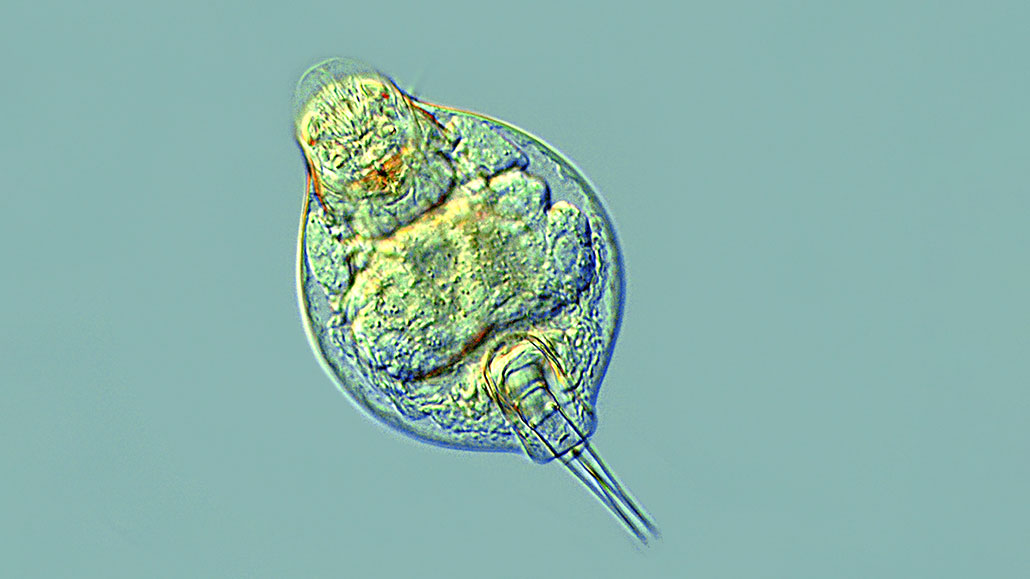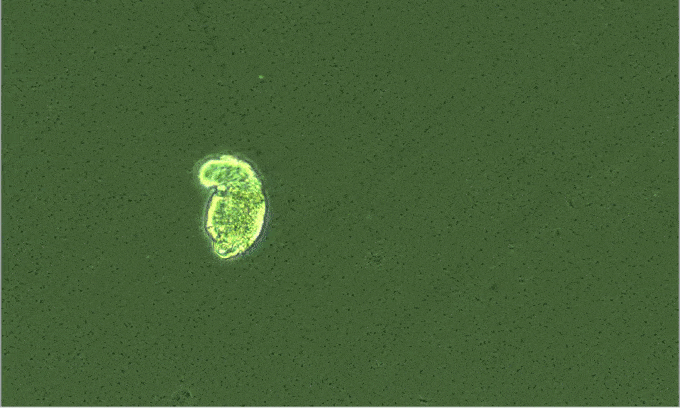Tiny animals survive 24,000 years in suspended animation
These waterborne rotifers awoke after being thawed from millennia in Arctic permafrost

Rotifers are rugged microscopic organisms that live in water. A “stem” grips the surface to keep the rotifer in place. New data show that when conditions get too cold, they can enter suspended animation.
Proyecto Agua/Water Project/Flickr (CC BY-NC-SA 2.0)
Share this:
- Share via email (Opens in new window) Email
- Click to share on Facebook (Opens in new window) Facebook
- Click to share on X (Opens in new window) X
- Click to share on Pinterest (Opens in new window) Pinterest
- Click to share on Reddit (Opens in new window) Reddit
- Share to Google Classroom (Opens in new window) Google Classroom
- Click to print (Opens in new window) Print
When conditions get tough, some tiny animals enter suspended animation and wait it out. Some might have to wait a long time for conditions to improve. As in 24,000 years, scientists now report. But once revived, these reanimated animals will resume life as normal.
They’re called rotifers. And if you have ever inspected a drop of pond water under a microscope, you might have spotted some. These tiny, multicelled animals live in water the world over. That includes ponds that dry up now and again, and anywhere it freezes.
The newly studied rotifers are known as bdelloids (DELL-oyds). Shaped a bit like a torpedo, they’re curious animals. All are females, with a pointy end that can grip surfaces to hold themselves in place. A bristled mouth at their other end scoops up algae and other food from the water.

If their watery home dries up or freezes, these super-survivors enter a state of suspended animation. They simply wait for liquid water to again become available. Then they resume their activities as if nothing had happened. They will even go back to reproducing. Being all female, they do this by creating clones. It’s a process known as parthenogenesis (Parth-en-oh-GEN-eh-sis).
Stas Malavin is a biologist at the Institute of Physicochemical and Biological Problems in Soil Science. That’s in Pushchino, Russia. He was part of a team that wanted to know how long bdelloids could survive freezing. Permafrost soil stays frozen year-round. And some researchers had found roundworms and fruits with seeds that survived tens of thousands of years in Arctic permafrost. For its new study, Malavin’s team decided to search for other types of life.
They drilled 3.5 meters (11.5 feet) into Siberia’s permafrost and removed a core of the frozen soil. To avoid contamination, they took samples from its center. Slowly, they brought those samples to room temperature, checking them every few days for five weeks. By the end, they had retrieved dozens of live rotifers.
To figure out how long ago the soil samples had frozen, the team used radiocarbon dating. Carbon-14 is radioactive. It eventually decays into carbon-12 at a set rate. The dating procedure compares the amount of carbon-12 and carbon-14 in a sample of carbon-based material. That ratio of C-12 to C-14 will give scientists an idea of a sample’s age. And for the Siberian soil, this pinned it age at 24 millennia.
The discovery shows that “a multicellular animal can be preserved frozen for thousands of years,” Malavin says.
“It is amazing that these researchers not only found rotifers, but [also] many other unicellular and multicellular organisms in this permafrost layer” says Andrew Rosendale. He’s a biologist at Mount St. Joseph University in Cincinnati, Ohio. “It will be exciting,” he says, “to see what additional creatures are found living in other frozen soil around the world.”
Both Rosendale and Malavin note that knowing how these tiny animals survive might aid people, too. Knowing how to survive suspended animation for so long could be useful for space exploration, says Malavin. Or it could “be applied in medicine to better preserve tissues, organs and embryos.”
There are probably other organisms out there in a similar state of suspension, Rosendale points out. “As climate change continues to thaw permafrost around the globe,” others may begin to awaken, he says. It’s just a matter of time.







